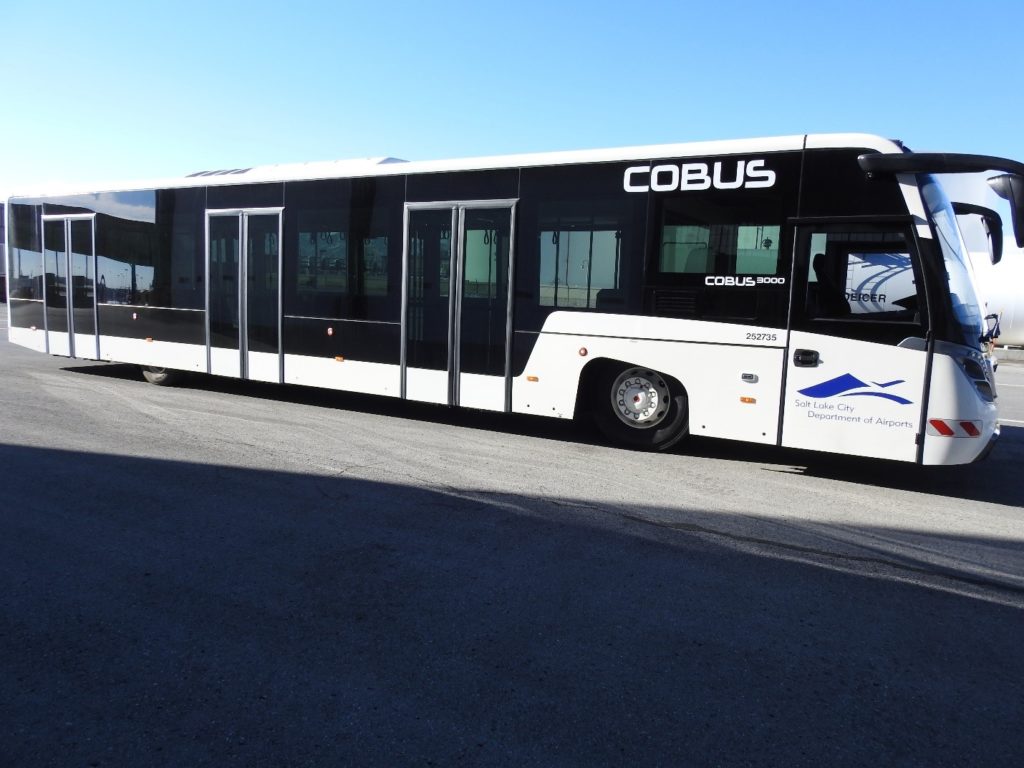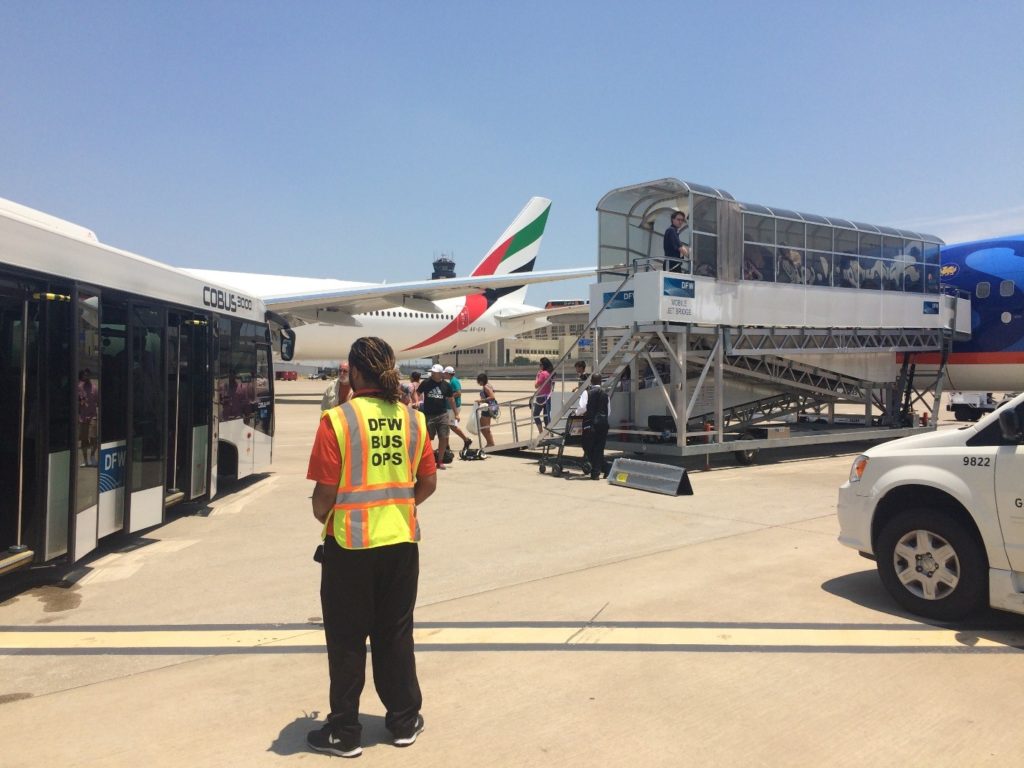SLC Airport to Begin Hardstand Operations
Passengers departing from Salt Lake City International Airport (SLC) may soon see a change in the way they board their flights. SLC is expected to begin implementing hardstand operations for select flights due to increasing demand for gates and a limited capacity.
Hardstand parking is a term used by airports to describe when an aircraft is parked on the ramp and passengers are transported to the airplane via a shuttle bus rather than boarding from a loading bridge at the gate. Hardstand operations will also be used at SLC to unload passengers during peak times.
SLC has purchased three Cobus vehicles in preparation for implementing hardstand operations. Cobus vehicles can accommodate about 60 passengers with carry-on luggage. Hardstand operations are common at European airports, while large-size U.S. airports also implement hardstand operations when capacity exceeds the number of available gates.
“SLC is looking at alternative ways to accommodate our growing number of passengers,” said Russell Pack, acting director for the Salt Lake City Dept. of Airports. “Hardstand operations are the most effect way to transport passengers without delaying departures or arrivals.”
Of the 71 gates at SLC Airport, only 55 have jet bridges. The remaining 16 gates are designed for regional jets and unable to accommodate mainline aircraft. Airlines have been moving away from flying regional jets and increasing their use of larger aircraft. Airlines also operate banks of flights to help with connections, which means aircraft arrive within the same time frame creating a demand for gates.
The New SLC Airport gates have been designed to accommodate mainline aircraft as well as regional jets, which will address the issue of gate capacity.
SLC Airport was built in 1961 to accommodate 10 million passengers and now sees more than 23 million passengers each year. As a hub operation for Delta Air Lines, SLC averages 347 daily departures to 93 nonstop destinations.



